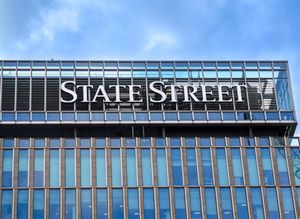
Flex’s first quarter results were met with a negative market reaction despite the company surpassing Wall Street’s revenue and non-GAAP profit expectations. Management attributed the strong performance to rapid growth in its data center segment, particularly in both cloud and power solutions. CEO Revathi Advaithi emphasized Flex’s ability to deliver integrated hardware, cooling, and power infrastructure as a key differentiator. CFO Kevin Krumm noted that the company’s operating margin expansion was supported by disciplined cost management and a favorable mix shift, especially as demand for advanced manufacturing and regionalized supply chains rose.
Is now the time to buy FLEX? Find out in our full research report (it’s free).
Flex (FLEX) Q2 CY2025 Highlights:
- Revenue: $6.58 billion vs analyst estimates of $6.27 billion (4.1% year-on-year growth, 4.9% beat)
- Adjusted EPS: $0.72 vs analyst estimates of $0.64 (12.3% beat)
- Adjusted EBITDA: $537 million vs analyst estimates of $491.7 million (8.2% margin, 9.2% beat)
- The company lifted its revenue guidance for the full year to $26.5 billion at the midpoint from $25.9 billion, a 2.3% increase
- Management raised its full-year Adjusted EPS guidance to $2.96 at the midpoint, a 1.7% increase
- Operating Margin: 4.7%, up from 3.7% in the same quarter last year
- Market Capitalization: $19.17 billion
While we enjoy listening to the management's commentary, our favorite part of earnings calls are the analyst questions. Those are unscripted and can often highlight topics that management teams would rather avoid or topics where the answer is complicated. Here is what has caught our attention.
Our Top 5 Analyst Questions Flex’s Q2 Earnings Call
-
Samik Chatterjee (JPMorgan Chase & Company) questioned why operating margin guidance was not raised despite higher revenue; CFO Kevin Krumm explained that tariff-related revenue is lower-margin and that investments and cautious volume assumptions limit margin upside.
-
Mark Trevor Delaney (Goldman Sachs Asset Management) asked about the potential for hyperscalers to bring power and cooling production in-house; CEO Revathi Advaithi responded that Flex’s integrated technology and manufacturing capabilities remain valued by customers, viewing such moves as validation of Flex’s approach.
-
Steven Bryant Fox (Fox Advisors) inquired about progress on capacity constraints; Advaithi highlighted the ramp-up of new facilities in Dallas and Poland, emphasizing ongoing investment to meet AI infrastructure demand.
-
Ruplu Bhattacharya (Bank of America) asked about the impact of tariffs and interest expense on guidance; Krumm clarified that tariff impacts are now included in guidance and are mostly passed through, with interest and currency factors also considered.
-
Robert Stephen Barger (KeyBanc Capital Markets) sought clarity on customer adoption of Flex’s full suite of solutions; Advaithi stated that most hyperscaler customers engage across the portfolio, especially as power density and integration requirements grow.
Catalysts in Upcoming Quarters
Looking ahead, the StockStory team will be monitoring (1) progress on scaling new manufacturing capacity to support data center and AI infrastructure demand, (2) the impact of tariffs and regionalization strategies on margins and operational flexibility, and (3) trends in customer adoption of integrated solutions across both cloud and power segments. Execution on capital allocation toward high-growth end markets and management of supply chain risks will also be important signposts.
Flex currently trades at $51.21, down from $53.82 just before the earnings. At this price, is it a buy or sell? Find out in our full research report (it’s free).
High-Quality Stocks for All Market Conditions
When Trump unveiled his aggressive tariff plan in April 2024, markets tanked as investors feared a full-blown trade war. But those who panicked and sold missed the subsequent rebound that’s already erased most losses.
Don’t let fear keep you from great opportunities and take a look at Top 5 Growth Stocks for this month. This is a curated list of our High Quality stocks that have generated a market-beating return of 183% over the last five years (as of March 31st 2025).
Stocks that made our list in 2020 include now familiar names such as Nvidia (+1,545% between March 2020 and March 2025) as well as under-the-radar businesses like the once-micro-cap company Kadant (+351% five-year return). Find your next big winner with StockStory today.
StockStory is growing and hiring equity analyst and marketing roles. Are you a 0 to 1 builder passionate about the markets and AI? See the open roles here.






